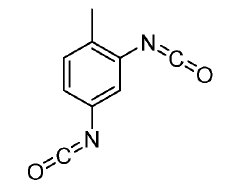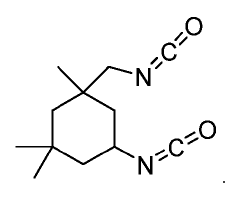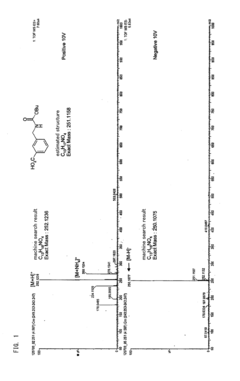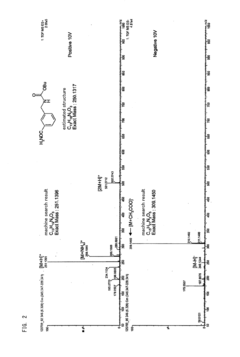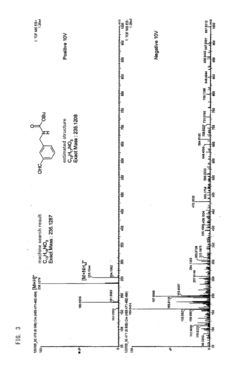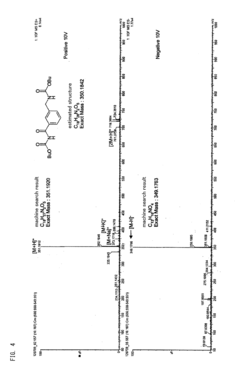Understanding Isocyanate-Free Alternatives in Production
JUL 10, 20259 MIN READ
Generate Your Research Report Instantly with AI Agent
Patsnap Eureka helps you evaluate technical feasibility & market potential.
Isocyanate-Free Tech Background and Objectives
Isocyanate-based products have been widely used in various industries for decades, particularly in the production of polyurethanes. However, growing concerns about the health and environmental impacts of isocyanates have led to increased interest in developing isocyanate-free alternatives. This technological shift aims to address the potential hazards associated with isocyanate exposure while maintaining or improving the performance characteristics of end products.
The evolution of isocyanate-free technologies can be traced back to the 1990s when initial research into alternative chemistries began. Since then, the field has experienced significant advancements, driven by regulatory pressures, consumer demand for safer products, and industry-wide sustainability initiatives. The primary objective of this technological pursuit is to develop viable substitutes that can match or exceed the performance of isocyanate-based systems across various applications, including coatings, adhesives, sealants, and elastomers.
Key milestones in the development of isocyanate-free alternatives include the introduction of silane-terminated polymers (STPs) in the late 1990s, the emergence of polyaspartic coatings in the early 2000s, and more recent innovations in bio-based polyols and non-isocyanate polyurethanes (NIPUs). These advancements have paved the way for a new generation of products that offer improved safety profiles without compromising on functionality.
The technological landscape of isocyanate-free alternatives is characterized by diverse approaches, each targeting specific performance attributes and application areas. Some of the prominent technologies include silane-modified polymers, epoxy-based systems, polycarbonate-based alternatives, and various hybrid chemistries. These alternatives aim to replicate the versatility and performance of isocyanate-based products while eliminating the associated health and environmental risks.
As the field continues to evolve, researchers and industry players are focusing on several key objectives. These include enhancing the curing speed and efficiency of isocyanate-free systems, improving their resistance to environmental factors, and expanding their applicability across a broader range of industries. Additionally, there is a strong emphasis on developing more sustainable and eco-friendly formulations, aligning with global trends towards greener chemistry and circular economy principles.
The pursuit of isocyanate-free alternatives represents a significant technological challenge and opportunity. It requires a multidisciplinary approach, combining expertise in polymer chemistry, materials science, and process engineering. As research progresses, the industry anticipates breakthroughs that could revolutionize various sectors, from construction and automotive to furniture and textiles, by providing safer, more sustainable alternatives to traditional isocyanate-based products.
The evolution of isocyanate-free technologies can be traced back to the 1990s when initial research into alternative chemistries began. Since then, the field has experienced significant advancements, driven by regulatory pressures, consumer demand for safer products, and industry-wide sustainability initiatives. The primary objective of this technological pursuit is to develop viable substitutes that can match or exceed the performance of isocyanate-based systems across various applications, including coatings, adhesives, sealants, and elastomers.
Key milestones in the development of isocyanate-free alternatives include the introduction of silane-terminated polymers (STPs) in the late 1990s, the emergence of polyaspartic coatings in the early 2000s, and more recent innovations in bio-based polyols and non-isocyanate polyurethanes (NIPUs). These advancements have paved the way for a new generation of products that offer improved safety profiles without compromising on functionality.
The technological landscape of isocyanate-free alternatives is characterized by diverse approaches, each targeting specific performance attributes and application areas. Some of the prominent technologies include silane-modified polymers, epoxy-based systems, polycarbonate-based alternatives, and various hybrid chemistries. These alternatives aim to replicate the versatility and performance of isocyanate-based products while eliminating the associated health and environmental risks.
As the field continues to evolve, researchers and industry players are focusing on several key objectives. These include enhancing the curing speed and efficiency of isocyanate-free systems, improving their resistance to environmental factors, and expanding their applicability across a broader range of industries. Additionally, there is a strong emphasis on developing more sustainable and eco-friendly formulations, aligning with global trends towards greener chemistry and circular economy principles.
The pursuit of isocyanate-free alternatives represents a significant technological challenge and opportunity. It requires a multidisciplinary approach, combining expertise in polymer chemistry, materials science, and process engineering. As research progresses, the industry anticipates breakthroughs that could revolutionize various sectors, from construction and automotive to furniture and textiles, by providing safer, more sustainable alternatives to traditional isocyanate-based products.
Market Demand for Safer Alternatives
The market demand for safer alternatives to isocyanate-based products has been steadily increasing in recent years, driven by growing awareness of health and environmental concerns associated with traditional isocyanate compounds. Industries such as automotive, construction, and furniture manufacturing are actively seeking isocyanate-free options to meet stringent regulations and consumer preferences for eco-friendly products.
In the automotive sector, there is a significant push towards safer alternatives for vehicle interiors, particularly in the production of seats, dashboards, and other components. Major automakers are investing in research and development of isocyanate-free materials to improve air quality inside vehicles and reduce potential health risks for workers and consumers.
The construction industry has also shown a strong interest in isocyanate-free alternatives for insulation, sealants, and adhesives. This demand is fueled by the growing green building movement and the need for sustainable construction materials. Building codes and certifications increasingly favor low-emission and non-toxic materials, creating a substantial market opportunity for isocyanate-free products.
Furniture manufacturers are responding to consumer demand for healthier home environments by exploring safer alternatives in the production of foams, coatings, and adhesives. The trend towards eco-labeling and transparency in product ingredients has further accelerated the shift away from isocyanate-based materials in this sector.
The global market for isocyanate-free alternatives is expected to experience robust growth over the next decade. This growth is supported by stringent regulations in regions such as the European Union, where REACH (Registration, Evaluation, Authorization, and Restriction of Chemicals) guidelines have placed restrictions on certain isocyanate compounds.
Emerging economies, particularly in Asia-Pacific, are also contributing to the increased demand for safer alternatives. As these regions adopt more stringent environmental and health regulations, manufacturers are proactively seeking isocyanate-free solutions to maintain market access and competitiveness.
The shift towards safer alternatives is not without challenges. Performance characteristics, cost-effectiveness, and scalability of production remain key considerations for industry adoption. However, ongoing research and development efforts are addressing these challenges, with promising advancements in bio-based and water-borne technologies.
In conclusion, the market demand for isocyanate-free alternatives is robust and growing across multiple industries. This trend is driven by a combination of regulatory pressures, consumer awareness, and corporate sustainability initiatives. As technology advances and production scales up, the market for safer alternatives is poised for significant expansion in the coming years.
In the automotive sector, there is a significant push towards safer alternatives for vehicle interiors, particularly in the production of seats, dashboards, and other components. Major automakers are investing in research and development of isocyanate-free materials to improve air quality inside vehicles and reduce potential health risks for workers and consumers.
The construction industry has also shown a strong interest in isocyanate-free alternatives for insulation, sealants, and adhesives. This demand is fueled by the growing green building movement and the need for sustainable construction materials. Building codes and certifications increasingly favor low-emission and non-toxic materials, creating a substantial market opportunity for isocyanate-free products.
Furniture manufacturers are responding to consumer demand for healthier home environments by exploring safer alternatives in the production of foams, coatings, and adhesives. The trend towards eco-labeling and transparency in product ingredients has further accelerated the shift away from isocyanate-based materials in this sector.
The global market for isocyanate-free alternatives is expected to experience robust growth over the next decade. This growth is supported by stringent regulations in regions such as the European Union, where REACH (Registration, Evaluation, Authorization, and Restriction of Chemicals) guidelines have placed restrictions on certain isocyanate compounds.
Emerging economies, particularly in Asia-Pacific, are also contributing to the increased demand for safer alternatives. As these regions adopt more stringent environmental and health regulations, manufacturers are proactively seeking isocyanate-free solutions to maintain market access and competitiveness.
The shift towards safer alternatives is not without challenges. Performance characteristics, cost-effectiveness, and scalability of production remain key considerations for industry adoption. However, ongoing research and development efforts are addressing these challenges, with promising advancements in bio-based and water-borne technologies.
In conclusion, the market demand for isocyanate-free alternatives is robust and growing across multiple industries. This trend is driven by a combination of regulatory pressures, consumer awareness, and corporate sustainability initiatives. As technology advances and production scales up, the market for safer alternatives is poised for significant expansion in the coming years.
Current State and Challenges in Isocyanate-Free Production
The current state of isocyanate-free production is characterized by significant advancements in alternative technologies, driven by increasing environmental and health concerns associated with traditional isocyanate-based products. Many industries, particularly in coatings, adhesives, and polyurethane manufacturing, are actively seeking safer and more sustainable alternatives.
One of the primary challenges in isocyanate-free production is achieving comparable performance to traditional isocyanate-based products. Isocyanates have long been favored for their excellent mechanical properties, chemical resistance, and versatility. Developing alternatives that can match or exceed these characteristics while maintaining cost-effectiveness remains a significant hurdle.
Several promising isocyanate-free technologies have emerged in recent years. These include non-isocyanate polyurethanes (NIPUs), which utilize cyclic carbonates and amines to form urethane linkages. Another approach involves the use of bio-based polyols and carboxylic acid-based crosslinkers. Silane-terminated polymers and epoxy-based systems have also gained traction as potential alternatives.
Regulatory pressures have been a key driver in the development of isocyanate-free alternatives. Stricter regulations on isocyanate use, particularly in Europe and North America, have accelerated research and development efforts. However, the lack of global harmonization in regulatory standards poses challenges for manufacturers operating in multiple markets.
The adoption of isocyanate-free technologies varies across different sectors. The automotive and construction industries have shown significant interest, driven by occupational health concerns and sustainability goals. However, aerospace and high-performance applications still largely rely on isocyanate-based products due to stringent performance requirements.
A major challenge in the transition to isocyanate-free production is the need for substantial investment in new equipment and processes. Many existing manufacturing facilities are optimized for isocyanate-based production, and retooling for alternative technologies can be costly and time-consuming.
The raw material supply chain for isocyanate-free alternatives is still developing. Ensuring a stable and cost-effective supply of novel raw materials is crucial for widespread adoption. This challenge is particularly acute for bio-based alternatives, where scaling up production to meet industrial demands remains a significant hurdle.
Research efforts are ongoing to address these challenges. Collaborative initiatives between academia and industry are focusing on improving the performance of isocyanate-free alternatives, developing more efficient production processes, and exploring novel chemistries. Advancements in polymer science and green chemistry are expected to play a crucial role in overcoming current limitations.
One of the primary challenges in isocyanate-free production is achieving comparable performance to traditional isocyanate-based products. Isocyanates have long been favored for their excellent mechanical properties, chemical resistance, and versatility. Developing alternatives that can match or exceed these characteristics while maintaining cost-effectiveness remains a significant hurdle.
Several promising isocyanate-free technologies have emerged in recent years. These include non-isocyanate polyurethanes (NIPUs), which utilize cyclic carbonates and amines to form urethane linkages. Another approach involves the use of bio-based polyols and carboxylic acid-based crosslinkers. Silane-terminated polymers and epoxy-based systems have also gained traction as potential alternatives.
Regulatory pressures have been a key driver in the development of isocyanate-free alternatives. Stricter regulations on isocyanate use, particularly in Europe and North America, have accelerated research and development efforts. However, the lack of global harmonization in regulatory standards poses challenges for manufacturers operating in multiple markets.
The adoption of isocyanate-free technologies varies across different sectors. The automotive and construction industries have shown significant interest, driven by occupational health concerns and sustainability goals. However, aerospace and high-performance applications still largely rely on isocyanate-based products due to stringent performance requirements.
A major challenge in the transition to isocyanate-free production is the need for substantial investment in new equipment and processes. Many existing manufacturing facilities are optimized for isocyanate-based production, and retooling for alternative technologies can be costly and time-consuming.
The raw material supply chain for isocyanate-free alternatives is still developing. Ensuring a stable and cost-effective supply of novel raw materials is crucial for widespread adoption. This challenge is particularly acute for bio-based alternatives, where scaling up production to meet industrial demands remains a significant hurdle.
Research efforts are ongoing to address these challenges. Collaborative initiatives between academia and industry are focusing on improving the performance of isocyanate-free alternatives, developing more efficient production processes, and exploring novel chemistries. Advancements in polymer science and green chemistry are expected to play a crucial role in overcoming current limitations.
Existing Isocyanate-Free Production Solutions
01 Polyurethane alternatives
Development of isocyanate-free polyurethane alternatives using non-isocyanate chemistry. These alternatives often involve the reaction of cyclic carbonates with amines or other nucleophiles to form urethane-like linkages. This approach eliminates the need for toxic isocyanates while maintaining similar properties to traditional polyurethanes.- Non-isocyanate polyurethane alternatives: Development of non-isocyanate polyurethane (NIPU) systems as alternatives to traditional isocyanate-based polyurethanes. These systems often involve the reaction of cyclic carbonates with amines to form urethane linkages without the use of isocyanates. NIPUs offer improved safety and environmental benefits while maintaining desirable polyurethane properties.
- Silane-terminated polymers: Utilization of silane-terminated polymers as isocyanate-free alternatives in adhesives, sealants, and coatings. These polymers typically cure through moisture-induced crosslinking, offering good adhesion properties and flexibility without the use of isocyanates. They are particularly useful in construction and automotive applications.
- Bio-based polyols and resins: Development of bio-based polyols and resins derived from renewable resources as alternatives to petroleum-based isocyanate systems. These materials can be used in various applications, including foams, coatings, and adhesives, offering improved sustainability and reduced environmental impact.
- Epoxy-based systems: Utilization of epoxy-based systems as alternatives to isocyanates in certain applications. These systems can provide excellent adhesion, chemical resistance, and durability. They are particularly useful in coatings, adhesives, and composite materials where isocyanate-free options are desired.
- Acrylic and methacrylic polymers: Development of acrylic and methacrylic polymer systems as isocyanate-free alternatives in various applications. These polymers can be formulated to provide good adhesion, weather resistance, and flexibility. They are commonly used in coatings, adhesives, and sealants where isocyanate-free options are preferred.
02 Bio-based and renewable raw materials
Utilization of bio-based and renewable raw materials to create isocyanate-free polymers and coatings. This includes the use of plant-derived oils, sugars, and other natural compounds as starting materials for polymer synthesis, reducing reliance on petroleum-based chemicals and improving sustainability.Expand Specific Solutions03 Silane-terminated polymers
Development of silane-terminated polymers as isocyanate-free alternatives for adhesives, sealants, and coatings. These polymers cure through moisture-induced crosslinking of silane groups, providing good adhesion and flexibility without the use of isocyanates.Expand Specific Solutions04 Epoxy-based systems
Formulation of epoxy-based systems as alternatives to isocyanate-containing products. These systems often involve the reaction of epoxy resins with various hardeners or curing agents to create crosslinked networks with desirable properties for coatings, adhesives, and composites.Expand Specific Solutions05 Acrylate and methacrylate polymers
Development of acrylate and methacrylate-based polymers as isocyanate-free alternatives for various applications. These polymers can be formulated to provide similar performance characteristics to isocyanate-based systems while offering improved environmental and health profiles.Expand Specific Solutions
Key Players in Alternative Materials Industry
The market for isocyanate-free alternatives in production is in a growth phase, driven by increasing environmental and health concerns. The global market size for these alternatives is expanding, with projections indicating significant growth in the coming years. Technologically, the field is advancing rapidly, with companies like BASF, Covestro, and Wanhua Chemical Group leading innovation. These firms are developing novel chemistries and processes to create high-performance, sustainable alternatives to traditional isocyanates. The technology is maturing, with some solutions already commercialized, while others are in advanced stages of development. Collaboration between industry leaders and research institutions is accelerating progress, indicating a competitive yet collaborative landscape.
BASF Corp.
Technical Solution: BASF has developed a range of isocyanate-free alternatives for various applications. Their Acrodur® technology is a thermally cross-linkable, water-based polymer system that offers a sustainable alternative to formaldehyde and isocyanate-based binders[1]. This technology is particularly useful in the production of lightweight composites for automotive interiors. BASF has also introduced Elastollan® N, a bio-based thermoplastic polyurethane (TPU) that uses renewable raw materials and eliminates the need for isocyanates in production[2]. Additionally, their Elastopan® polyurethane systems incorporate renewable raw materials and can be formulated without isocyanates for specific applications[3].
Strengths: Environmentally friendly, reduced VOC emissions, improved worker safety. Weaknesses: May have different performance characteristics compared to traditional isocyanate-based products, potentially higher production costs.
Covestro Deutschland AG
Technical Solution: Covestro has developed INSQIN®, a water-based polyurethane (PU) technology for textile coating that eliminates the need for solvents and isocyanates[4]. This technology uses a two-component system where the crosslinking occurs at room temperature, reducing energy consumption. Covestro has also introduced Bayhydrol® eco UV 2877, a UV-curable, water-based polyurethane dispersion for wood coatings that is free from isocyanates and solvents[5]. In the automotive sector, Covestro's Desmodur® ultra product line offers low-monomer or monomer-free alternatives to traditional isocyanates, improving worker safety and reducing emissions[6].
Strengths: Versatile applications across industries, improved sustainability profile, enhanced workplace safety. Weaknesses: May require modifications to existing production processes, potential limitations in certain high-performance applications.
Core Innovations in Non-Isocyanate Chemistry
Flow chemistry synthesis of isocyanates
PatentWO2021119606A1
Innovation
- A continuous flow process involving the mixing of acyl hydrazides with nitrous acid to form acyl azides, followed by heating in the presence of an organic solvent to produce isocyanates through Curtius rearrangement, offering a safer and more scalable method for isocyanate synthesis.
Xylylene dicarbamate, method for producing xylylene diisocyanate, xylylene diisocyanate, and method for reserving xylylene dicarbamate
PatentActiveUS20170158623A1
Innovation
- The method involves thermally decomposing xylylene dicarbamate with an impurity content of less than 100 ppm, under controlled heating conditions (50-180°C) and in a low oxygen environment, using an inert gas to minimize oxidation and impurity formation, ensuring high-quality xylylene diisocyanate production.
Environmental Impact Assessment
The environmental impact assessment of isocyanate-free alternatives in production is a critical aspect of evaluating their viability and sustainability. These alternatives have gained significant attention due to growing concerns about the health and environmental risks associated with traditional isocyanate-based products.
One of the primary environmental benefits of isocyanate-free alternatives is the reduction of volatile organic compound (VOC) emissions. Many isocyanate-free formulations have lower VOC content, which contributes to improved air quality and reduced smog formation. This is particularly important in urban areas where air pollution is a major concern.
Furthermore, isocyanate-free alternatives often have a lower carbon footprint compared to their isocyanate-based counterparts. The production processes for some of these alternatives require less energy and generate fewer greenhouse gas emissions. This aligns with global efforts to combat climate change and reduce industrial carbon emissions.
Water-based isocyanate-free systems offer additional environmental advantages. They eliminate the need for organic solvents, reducing the risk of soil and water contamination. This is especially beneficial in areas where water resources are scarce or vulnerable to pollution.
However, it is important to note that not all isocyanate-free alternatives are equally environmentally friendly. Some may require the use of other chemicals that have their own environmental impacts. A comprehensive life cycle assessment is necessary to fully understand the environmental implications of these alternatives.
The disposal and recyclability of isocyanate-free products are also important considerations. Many of these alternatives are designed to be more easily recyclable or biodegradable, reducing the burden on landfills and promoting a circular economy. This aspect is particularly relevant in industries such as packaging and construction, where end-of-life management is a significant environmental concern.
In terms of ecosystem impact, isocyanate-free alternatives generally pose a lower risk to aquatic and terrestrial organisms. The reduced toxicity and persistence in the environment make them less likely to bioaccumulate in food chains or cause long-term ecological damage.
Despite these potential benefits, it is crucial to conduct thorough environmental impact assessments for each specific isocyanate-free alternative. Factors such as raw material sourcing, manufacturing processes, transportation, and end-of-life scenarios must be carefully evaluated to ensure that the overall environmental impact is indeed reduced compared to traditional isocyanate-based products.
One of the primary environmental benefits of isocyanate-free alternatives is the reduction of volatile organic compound (VOC) emissions. Many isocyanate-free formulations have lower VOC content, which contributes to improved air quality and reduced smog formation. This is particularly important in urban areas where air pollution is a major concern.
Furthermore, isocyanate-free alternatives often have a lower carbon footprint compared to their isocyanate-based counterparts. The production processes for some of these alternatives require less energy and generate fewer greenhouse gas emissions. This aligns with global efforts to combat climate change and reduce industrial carbon emissions.
Water-based isocyanate-free systems offer additional environmental advantages. They eliminate the need for organic solvents, reducing the risk of soil and water contamination. This is especially beneficial in areas where water resources are scarce or vulnerable to pollution.
However, it is important to note that not all isocyanate-free alternatives are equally environmentally friendly. Some may require the use of other chemicals that have their own environmental impacts. A comprehensive life cycle assessment is necessary to fully understand the environmental implications of these alternatives.
The disposal and recyclability of isocyanate-free products are also important considerations. Many of these alternatives are designed to be more easily recyclable or biodegradable, reducing the burden on landfills and promoting a circular economy. This aspect is particularly relevant in industries such as packaging and construction, where end-of-life management is a significant environmental concern.
In terms of ecosystem impact, isocyanate-free alternatives generally pose a lower risk to aquatic and terrestrial organisms. The reduced toxicity and persistence in the environment make them less likely to bioaccumulate in food chains or cause long-term ecological damage.
Despite these potential benefits, it is crucial to conduct thorough environmental impact assessments for each specific isocyanate-free alternative. Factors such as raw material sourcing, manufacturing processes, transportation, and end-of-life scenarios must be carefully evaluated to ensure that the overall environmental impact is indeed reduced compared to traditional isocyanate-based products.
Regulatory Landscape for Chemical Alternatives
The regulatory landscape for chemical alternatives to isocyanates is complex and evolving, driven by increasing awareness of health and environmental concerns. In the European Union, the REACH (Registration, Evaluation, Authorization and Restriction of Chemicals) regulation plays a crucial role in shaping the use of chemical substances. Under REACH, isocyanates are classified as substances of very high concern (SVHCs) due to their respiratory sensitizing properties, leading to stricter controls and potential phase-outs.
In the United States, the Environmental Protection Agency (EPA) regulates isocyanates under the Toxic Substances Control Act (TSCA). The EPA has initiated risk evaluations for several diisocyanates, which may result in additional restrictions or requirements for their use. Additionally, the Occupational Safety and Health Administration (OSHA) has established permissible exposure limits for various isocyanates in workplace settings.
Many countries are adopting similar approaches, with Japan's Chemical Substances Control Law and China's Measures for Environmental Management of New Chemical Substances imposing stringent requirements on isocyanate use and encouraging the development of safer alternatives.
The regulatory push towards isocyanate-free alternatives is further supported by various green chemistry initiatives and sustainable development goals. For instance, the European Union's Circular Economy Action Plan promotes the use of safer and more sustainable chemicals, indirectly encouraging the adoption of isocyanate alternatives.
Industry-specific regulations also play a significant role. In the automotive sector, the EU End-of-Life Vehicles Directive promotes the use of recyclable and recoverable materials, indirectly favoring isocyanate-free alternatives that are easier to recycle. Similarly, in the construction industry, green building certifications like LEED and BREEAM incentivize the use of low-emission materials, including isocyanate-free products.
The regulatory landscape is not limited to restrictions; it also includes incentives for innovation. Many governments offer research grants and tax incentives for the development of safer chemical alternatives. For example, the US EPA's Safer Choice program recognizes products that use safer chemical ingredients, providing a market advantage for isocyanate-free alternatives.
As global regulations continue to tighten, companies are increasingly motivated to invest in research and development of isocyanate-free technologies. This regulatory pressure, combined with market demand for safer products, is driving a significant shift in the chemical industry towards more sustainable and environmentally friendly alternatives to isocyanates.
In the United States, the Environmental Protection Agency (EPA) regulates isocyanates under the Toxic Substances Control Act (TSCA). The EPA has initiated risk evaluations for several diisocyanates, which may result in additional restrictions or requirements for their use. Additionally, the Occupational Safety and Health Administration (OSHA) has established permissible exposure limits for various isocyanates in workplace settings.
Many countries are adopting similar approaches, with Japan's Chemical Substances Control Law and China's Measures for Environmental Management of New Chemical Substances imposing stringent requirements on isocyanate use and encouraging the development of safer alternatives.
The regulatory push towards isocyanate-free alternatives is further supported by various green chemistry initiatives and sustainable development goals. For instance, the European Union's Circular Economy Action Plan promotes the use of safer and more sustainable chemicals, indirectly encouraging the adoption of isocyanate alternatives.
Industry-specific regulations also play a significant role. In the automotive sector, the EU End-of-Life Vehicles Directive promotes the use of recyclable and recoverable materials, indirectly favoring isocyanate-free alternatives that are easier to recycle. Similarly, in the construction industry, green building certifications like LEED and BREEAM incentivize the use of low-emission materials, including isocyanate-free products.
The regulatory landscape is not limited to restrictions; it also includes incentives for innovation. Many governments offer research grants and tax incentives for the development of safer chemical alternatives. For example, the US EPA's Safer Choice program recognizes products that use safer chemical ingredients, providing a market advantage for isocyanate-free alternatives.
As global regulations continue to tighten, companies are increasingly motivated to invest in research and development of isocyanate-free technologies. This regulatory pressure, combined with market demand for safer products, is driving a significant shift in the chemical industry towards more sustainable and environmentally friendly alternatives to isocyanates.
Unlock deeper insights with Patsnap Eureka Quick Research — get a full tech report to explore trends and direct your research. Try now!
Generate Your Research Report Instantly with AI Agent
Supercharge your innovation with Patsnap Eureka AI Agent Platform!

